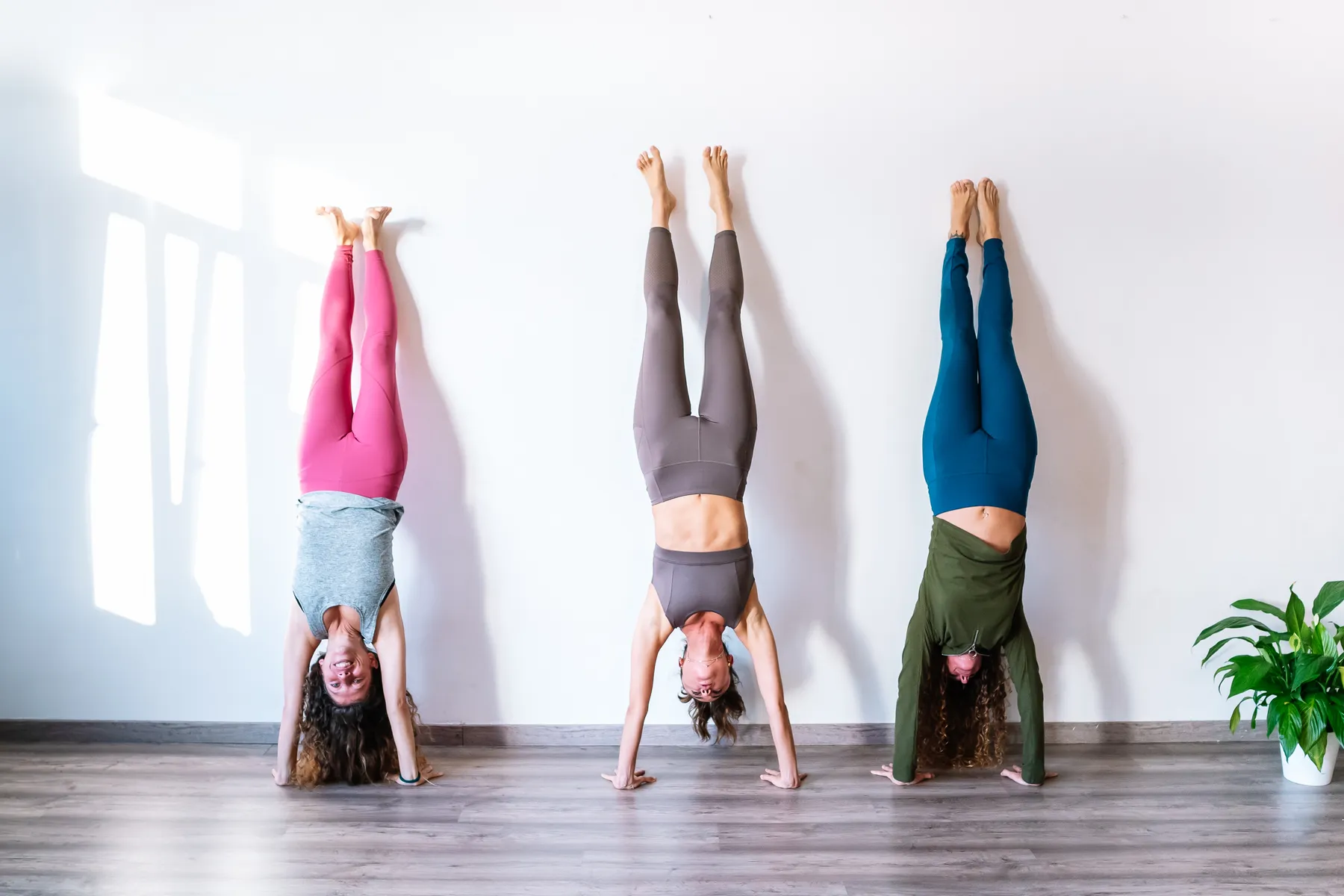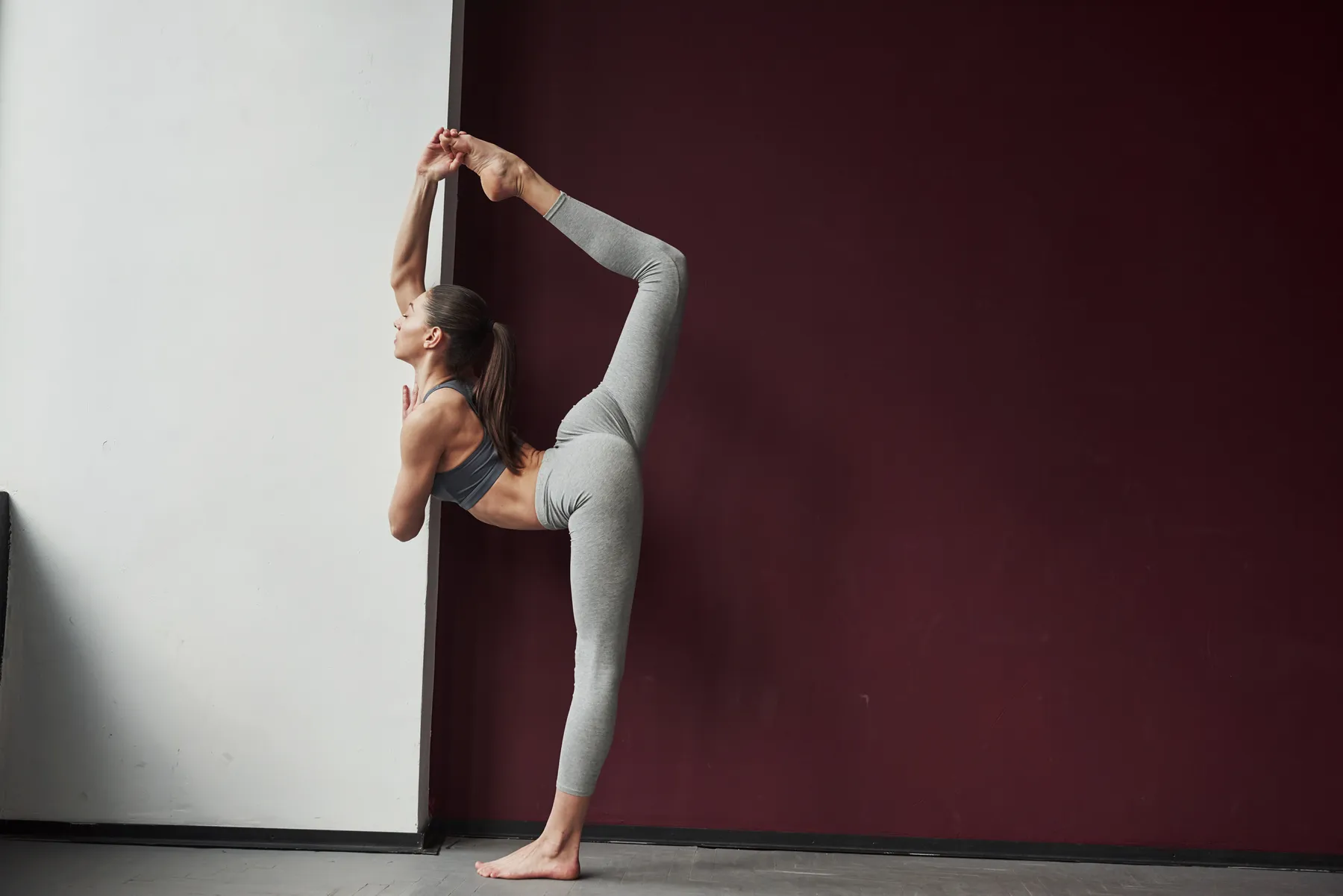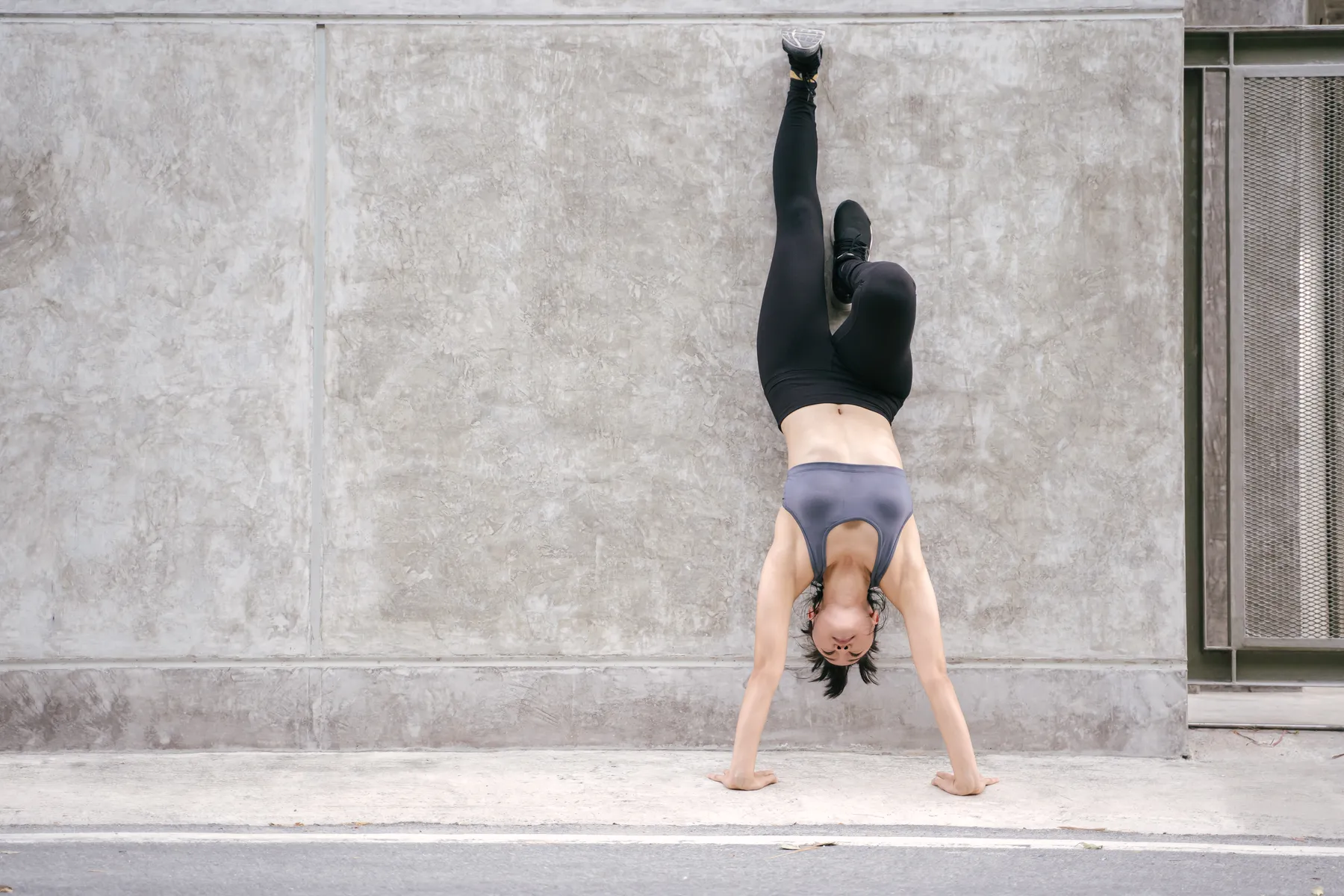Introduction
Welcome to the world of wall yoga, where old-school yoga meets new ideas and help. Picture yourself doing yoga with a wall supporting you while your body moves smoothly. Wall yoga is all about using the wall as a prop to improve alignment, steadiness, and relaxation in every pose. In this guide, we will talk about Wall Yoga Exercises.
Read more exciting blogs about the first steps in yoga fitness.
Benefits and Versatility of Wall Yoga Exercises
The wall helps you in this fast-paced style of yoga by giving you both support and pressure as you move through different poses. Wall yoga benefits people of all skill levels, from gentle stretches to energizing exercises that build muscle. Using the wall, you can strengthen your stretches, improve your alignment, and find new levels of strength and flexibility.
New Dimension of Yoga Practice with the Support of a Wall
Are you ready to get better at yoga? Wall yoga is a new way to explore and change your life. Come with us on this trip. Wall yoga has something for everyone, from experienced yogis who want to add to their skills to people who are just starting and enjoying a safe way to get started. Please take advantage of the wall’s strength to improve our practice and see how yoga can change your life radically.
Understanding Wall Yoga: The Basics
Defining Wall Yoga and Its Origins
Wall yoga is a modern kind that uses a wall to deepen poses, enhance alignment, and give support. Wall yoga, whose roots are unknown, has grown in popularity as practitioners explore new ways to improve their practice. Based on Iyengar yoga, which emphasizes alignment and support, wall yoga is a unique asana practice for all levels.
Exploring the Principles and Benefits of Practicing Yoga with a Wall
Yoga with a wall lets you explore positions differently and gain more awareness and stability. Important wall yoga ideas and advantages include:
- Alignment: The wall guides you through each pose, improving posture and lowering injury risk.
- Support: The wall stabilizes challenging poses and lets you relax into deeper stretches.
- Strength Building: Resistance from the wall can strengthen underutilized yoga muscles.
- Balancing: Wall-supported balancing postures promote balance and coordination.
- Wall yoga promotes attention and presence by focusing on the body against the wall and the breath.

Introduction to the Props and Equipment Used in Wall Yoga
The wall is the main prop used in wall yoga, but here are some other tools and props that can help you improve your level of practice:
- Yoga Mat: A yoga mat gives you support and comfort while you practice by padding and gripping the floor.
- Yoga Blocks: You can change poses and add extra support or height by putting blocks against the wall.
- Yoga Straps: Straps can help you stretch further, especially in poses with low flexibility.
- Spreads or bolsters: These can add support and comfort to restorative poses or meditation while sitting against the wall.
Foundations of Wall Yoga: Building Stability and Alignment
Using the Wall for Support in Foundational Yoga Poses
Wall yoga uses the wall to support and stabilize essential yoga poses. Use the wall to deepen your practice and gain strength and confidence. Foundational poses that benefit from wall support include:
- Mountain Pose (Tadasana): Align your heels, hips, shoulders, and head against the wall with your back. Hold your spine against the wall and align your body.
- Warrior II (Virabhadrasana II): Stand sideways with the rear foot against the wall and the front foot forward. Your back leg should be firmly against the wall to secure your stance and deepen your front lunge.
- Chair Pose (Utkatasana): Squat with your back on the wall as if sitting in a chair. The wall will support your knees and keep them above your ankles.
Cultivating Proper Alignment and Posture with the Aid of the Wall
A reliable cue for yoga alignment and posture is the wall. You can position your body and maintain stability during practice by using the wall as a reference. Body alignment suggestions with the wall:
- In standing positions like Warrior I or Tree Pose, press the back of your head, shoulders, and hips against the wall to align your spine vertically.
- Keep your pelvis neutral in seated poses like Seated Forward Bend or Seated Twist by sitting close to the wall and supporting your lower back’s natural curve.
- Shoulder Alignment: In Downward Facing Dog and Dolphin Pose, press your hands against the wall to engage your shoulders and prevent collapse.
Enhancing Balance and Stability through Wall-Assisted Poses
Balance postures are challenging, but the wall can help you improve your stability. Using the wall as a prop enables you to gain strength and confidence to balance quickly. Wall-assisted poses improve balance and stability:
- Tree Pose (Vrksasana): Stand with your body on its side and your back to the wall. Rest one hand on the wall to help you lift the other foot to your inner leg or calf.
- Half Moon Pose (Ardha Chandrasana): Stand on one side and rest your fingertips lightly on the wall. Extend one leg behind you and reach the other arm to the sky.
- Standing splits: Stand with your back to the wall and put your hands on it for support. Lift one leg straight behind you and try to make it parallel to the floor.
Wall Yoga Exercises for Strength and Flexibility
Leveraging the Wall to Deepen Stretches and Improve Flexibility
Using the wall during your yoga practice can give you extra support and leverage, which can help you safely strengthen your stretches and become more flexible. Do these stretches with the help of the wall as part of your routine:
- Wall Forward Fold: Face the wall and place your hands shoulder-high. Walk backward until your hips are over your heels in an L shape. Hip hinge and fold forward to bring your chest to the wall while keeping your spine straight. Relax into the pose and feel your hamstrings and calves stretch.
- Wall Hip Opener: Lay your back with your hips toward the wall and extend your legs. Relax your legs and slowly open them to the sides, stretching your inner thighs and hips deeply. Adjusting your hips from the wall changes the stretch intensity.

Incorporating Wall-Supported Strength-Building Exercises into Your Practice
The wall can also resist and challenge strength-training workouts, creating muscle and strength. Try these wall-supported strength exercises:
- Wall Push-Ups: Face the wall with arms at shoulder height and palms flat. Bend your elbows, lower your chest to the wall, and then push up. Maintain a straight line from head to heels throughout the exercise.
- Wall Squats: Back against the wall, feet hip-width apart. Slide down the wall into a squat with your thighs parallel to the floor and knees 90 degrees. Hold the squat position briefly, then push through your heels to stand.
Exploring Creative Variations of Traditional Yoga Poses Using the Wall
Use the wall creatively to challenge yoga positions. Try these inventive variations:
- Wall Warrior III: Hands shoulder-high, face wall. Lunge with one foot back, rear leg straight, and torso parallel to the floor. Elevate your hind leg behind you with your core. Stretch forward with the wall supporting your one-legged balance.
- Wall-Supported Kneel against the wall in headstand. Interlace your fingers and place your forearms on the floor, elbows shoulder-width apart. Put your crown on the mat between your hands. Line up your hips with the ceiling and your feet with your head. Hold onto the wall as you slowly elevate one leg and the other into a headstand.
Relaxation and Restoration: Wall Yoga for Stress Relief
Utilizing the Wall for Restorative Yoga Poses and Relaxation Techniques
Finding serenity and relaxation in the hustle and bustle of daily life is crucial to well-being. Restorative poses and wall-supported relaxation techniques make wall yoga uniquely relaxing. Using the wall as a prop enhances restorative yoga, promoting more profound relaxation and repair.
Promoting Deep Relaxation and Releasing Tension with Wall-Supported Poses
Wall-supported poses provide foundation and stability, helping the body and mind relax. These wall yoga positions and practices encourage deep relaxation and tension release:
- Viparita Karani: Lie on your back with your hips near the wall and extend your legs up the wall. Rest your arms by your sides, palms up. Close your eyes and focus on your breath as you relax and yield to gravity.
- The supported child’s pose (Balasana): Kneel hip-width apart in front of the wall with toes touching. Arms forward, forehead on the wall. Rest your torso on your thighs and relax your arms. Deeply breathe into your lower back and exhale to release tension.
- Supported Shoulder Stand (Salamba Sarvangasana): Lie with your hips near the wall and place a folded blanket or bolster under them. Use your hands to stabilize your lower back while you extend your legs up the wall. Close your eyes and feel your neck and shoulders opening and relaxing.
Harnessing the Calming Effects of Wall Yoga for Stress Relief and Rejuvenation
Practicing wall yoga regularly helps reduce stress and improve mental health. Regularly performing wall-supported poses helps soothe your body and mind. The wall’s soothing support enables you to relax and release tension. When you’re stressed out from work, family, or other life issues, wall yoga can help you relax and recharge.
Wall Yoga for Therapeutic Purposes: Healing and Rehabilitation
Addressing Common Physical Ailments and Injuries with Wall Yoga
Wall yoga can help with many physical issues and injuries by providing gentle support and targeted treatment. Wall yoga can be customized for accident recovery or chronic disease management. Common physical ailments that wall yoga might help:
- Back Pain: Legs-Up-The-Wall (Viparita Karani) and Supine Spinal Twist (Supta Matsyendrasana) might relieve back pain.
- Wall stretches like Eagle Arms (Garudasana) against the wall can ease shoulder and upper back stress.
- Knee problems? Wall squats or supported lunges can develop knee muscles and provide stability.
- Balance Issues: Supporting Tree Pose (Vrksasana) or Warrior III (Virabhadrasana III) with the wall can enhance balance and prevent falls.
Supporting Rehabilitation and Recovery through Targeted Wall Exercises
Wall yoga helps injured or rehabilitating patients improve strength, mobility, and confidence safely. Incorporate focused wall exercises into your rehabilitation program to speed up recovery. Rehabilitation wall workouts include:
- Wall push-ups can develop upper body strength and reduce wrist and shoulder stress.
- Wall Squats: Squatting against the wall with a stability ball behind your back strengthens the quadriceps, glutes, and core without straining the knees.
- Wall planks: Support the spine and strengthen the core, shoulders, and arms with your hands on the wall.
Integrating Therapeutic Techniques into a Holistic Wall Yoga Practice
Wall yoga with therapeutic techniques can boost healing and rehabilitation in addition to specific activities. Breathwork, mindfulness, and guided relaxation reduce stress, increase clarity, and promote well-being. Creating a complete wall yoga practice that addresses physical and mental healing and rehabilitation requires mixing physical movements with therapeutic activities.
Advanced Wall Yoga: Pushing the Boundaries
Challenging Your Practice with Advanced Wall Yoga Poses and Sequences
You’ll naturally seek new challenges and growth as you improve in wall yoga. Advanced wall yoga poses and sequences can challenge your strength, flexibility, and balance in new ways. Explore advanced positions and sequences like:
- Prepare for Handstand (Adho Mukha Vrksasana): Kick up into a handstand and hold for a few breaths before slowly descending using the wall as support.
- King Pigeon Pose (Eka Pada Raja Kapotasana): Place your back foot on the wall and lean into this tough hip opening to deepen the stretch.
- Wall Walks:
- Begin in plank facing away from the wall.
- Walk your feet up the wall until your body is vertical.
- Slowly return to plank.

Exploring Inversions and Arm Balances with the Support of the Wall
Many beginners find inversions and arm balances scary, but the wall may provide support and stability. As a prop, the wall can help you gain strength, confidence, and technique for inversions and arm balances. Try these inversions and arm balances:
- Forearm Stand (Pincha Mayurasana) against the Wall: Start in a dolphin position with your forearms on the ground and hips above your shoulders. Walking your feet toward your elbows, lift one leg at a time to the ceiling using the wall as support.
- Wall-Assisted Crow Pose (Bakasana): Squat facing the wall with hands on the ground. Position your knees on the backs of your upper arms and elevate one foot at a time, utilizing the wall for balance.
- Wall-Supported Headstand (Sirsasana): Kneel facing the wall with hands interlaced and elbows shoulder-width apart. Place your head a few inches from the wall and walk your feet toward your body, elevating your legs to the ceiling with control.
Pushing Beyond Limitations and Embracing New Possibilities in Your Practice
Advanced wall yoga lets you explore new practices and test your limits. Challenge yourself to attempt new postures, sequences, and variations to broaden your horizons, gain confidence, and experience yoga’s transformational power in new ways. Respect your body’s demands and limitations as you practice advanced poses with patience, mindfulness, and inquiry.
Remember that advanced wall yoga is about the journey as much as the destination. Celebrate your accomplishments, embrace growth and discovery, and most importantly, have fun pushing your practice with the wall.
Conclusion
During our study of wall yoga, we’ve seen how this new technique has the power to change lives. We’ve strengthened our stretches, improved our alignment, and pushed ourselves to go beyond our limits by using a wall to support our yoga stretches. We’ve seen how wall yoga can help our bodies, minds, and emotions, giving us more strength, flexibility, and relaxation.




